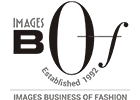Circular fashion can be defined as clothes, shoes or accessories that are designed, sourced, produced and provided with the intention to be used and circulated responsibly and effectively in society for as long as possible in their most valuable form, and hereafter return safely to the biosphere when no longer of human use…
Circular fashion means that every part of the life span of a fashion product is cyclical. A circular fashion product starts with design of a piece and how much longevity and timelessness it has, then onto the materials and whether or not they are sustainable, before the making of the item, whether or not its production fair and ethical, the workers and animals rights are being supported.
 Circular fashion can be defined as clothes, shoes or accessories that are designed, sourced, produced and provided with the intention to be used and circulated responsibly and effectively in society for as long as possible in their most valuable form, and hereafter return safely to the biosphere when no longer of human use (Green Strategy, 2014). Once the piece has become tired, it should be repaired or redesigned, then – rather than being binned – rented, swapped or sold at second-hand. All this means less will be bought and less will left ruining our planet.
Circular fashion can be defined as clothes, shoes or accessories that are designed, sourced, produced and provided with the intention to be used and circulated responsibly and effectively in society for as long as possible in their most valuable form, and hereafter return safely to the biosphere when no longer of human use (Green Strategy, 2014). Once the piece has become tired, it should be repaired or redesigned, then – rather than being binned – rented, swapped or sold at second-hand. All this means less will be bought and less will left ruining our planet.
Forms of Circular Fashion
Circular fashion can be categorized into various forms such as:
- Using single or mono materials where possible and ensure that products made from multiple materials can be easily disassembled to aid product recyclability.
- Assessing what items and materials of concern are used in production that cause pollution and/or prevent recycling then work with suppliers to remove them.
- Considering how other waste in the supply chain from garment off cuts to packaging can be captured then reused or recycled through internal processes or working with partner organizations.
- Keeping the fashion products in use and reuse as long as possible through developing or participating in collection schemes and supporting the development of technologies to recycle used textiles back to ‘good as new’ raw materials.
There are two long-standing arguments that challenge circular fashion – it is often understood that it is just a jumped-up term for recycling and the second is that a decrease in fast fashion will be harmful for businesses, the idea that if the customers shop less, sales will slump, and jobs will be lost.
According to Dr. Anna Brismar of Green Strategy, the first myth can be debunked quickly – recycling is just one of the many components of the new system; there are a number of criteria that means that a garment is truly circular. It is the need of the hour for the industry to adapt fast.
A circular fashion industry is one in which waste and pollution are designed out, products and materials are kept in use for as long as possible, including through reusing and recycling, and where natural systems are regenerated.
Sustainability & Circular Fashion
Economies of the fashion industry in the past few years are primarily based on a linear model. Resources are extracted from the planet, turned into products and then thrown away when no longer required. There may be some reuse and recycling on the way but ultimately it is still “take-make-waste”. We do not thoroughly use what we have. Items are manufactured with little care for quality. They are sold at cheap prices and do not last long. It is easy to be convinced that a perfectly good item should be replaced by its successor. For a number of reasons, instead of recirculating our materials, we throw them away to end up in landfills or incinerators.
 In contrast to this, a more sustainable approach is more circular – keeping resources, once extracted, in circulation for as long as possible through products that are used and reused and can be easily recycled into raw materials to use in production without the need to extract new resources. In a circular model, products are designed and developed with the next use in mind. This system works through several circular waste management practices: reusing, up-cycling and recycling. This means when the user doesn’t want an item of clothing anymore, instead of throwing it away he/she can gift or sell it, make it into a product of the same or higher quality, or send it to a recycling facility. A circular model is more than just a non-linear approach focusing on no waste. It also ensures that the ‘take’ and ‘make’ parts; the extraction of virgin resources and the turning of them into products, are also sustainable and renewable. It also considers the end-of-life stage, where if the product can no longer be used either whole, for its parts or recycled back into raw materials it can be disposed of without harming the environment.
In contrast to this, a more sustainable approach is more circular – keeping resources, once extracted, in circulation for as long as possible through products that are used and reused and can be easily recycled into raw materials to use in production without the need to extract new resources. In a circular model, products are designed and developed with the next use in mind. This system works through several circular waste management practices: reusing, up-cycling and recycling. This means when the user doesn’t want an item of clothing anymore, instead of throwing it away he/she can gift or sell it, make it into a product of the same or higher quality, or send it to a recycling facility. A circular model is more than just a non-linear approach focusing on no waste. It also ensures that the ‘take’ and ‘make’ parts; the extraction of virgin resources and the turning of them into products, are also sustainable and renewable. It also considers the end-of-life stage, where if the product can no longer be used either whole, for its parts or recycled back into raw materials it can be disposed of without harming the environment.
Circularity is one of the many sustainable practices, which are possible in fashion. The term ‘circular’ has rapidly become one of fashion’s most embraced sustainability concepts. Fashion giants like H&M, has started focusing on recyclable materials and designing with longevity in mind, before considering sustainable production processes when it comes to chemical and water management. For the H&M group becoming 100 percent circular means applying a circular approach to every aspect of our value chain. In short, a circular approach across our entire value chain will enable us to maximize resources and minimize waste thus reducing our negative impact on the environment and society.
London based Bethany Williams is trying to make a cycle of production rather than just a production line, which is different way of operating.
The label aims to set it up as a training programme and run it as a social enterprise in different structures – the brand and wholesale business, the consultancy, lecturing and teaching and exhibit as an artist. The industry should get engaged in rigorous reinvention of the typical production process by turning it into a virtuous cycle.
The Urgent Need of Sustainability & Circularity
According to the sustainability pioneer Stella McCartney, “The future of fashion is circular. It has to be”. Presently, the equivalent of one dump truck of textiles gets landfilled or burned every second, and by 2025 the clothing waste accumulated between now and then will weigh as much as today’s world population. This is a serious issue and cannot be ignored.
Stella McCartney, as a company is continuously working on new and interesting ways to be more circular. It gives them an exciting opportunity to get creative. The present linear fashion system needs a radical transformation. The entire industry needs to work together with huge levels of commitment and innovation and challenge the status quo. They realize that they need to evolve from just reducing the impact to making a positive impact, but this can only happen if all in the industry work together.
With the global population set to reach nine billion people by 2030, nature will struggle to meet human demands like never before. The goal of circular fashion is to ensure that clothes are made from safe and renewable materials, new business models increase their use, and old clothes are turned into new. We want to evolve the apparel industry to a future where every material is used and reused safely, where ecosystems are protected and where people are provided with dignified work. This is the philosophy of circular fashion. Our current fashion system is built on the traditional linear system of “take, make, and dispose of”. In this system we are using up our planet’s resources with increasing speed and selling them to our customers as disposable commodities. At a time where over-consumption is already putting a huge strain on our environment, we cannot accept a wasteful business model like this. The fashion industry currently is not just wasteful it is also rapacious, taking ever-increasing volumes of virgin raw materials that require land, water, oil, and chemicals and pollutes in production.
The fashion industry will be forced to come up with new ways of making business in a world that is naturally limited in time and space and in the availability of arable land, freshwater, minerals and raw oil. As the circular economy framework suggests, we need to focus on creating valuable services instead of short-term products. Instead of continuing to support a short-term profit-biased and ownership focused economy, the fashion industry needs to contribute to building a long-term prosperous and sharing-oriented global economy.
Clothes are an external expression of our personalities, while the importance of choice should not be overlooked, we should be more mindful of how many we truly need and where they come from. It’s high time we took a closer look at a new concept for our time — the circular economy. It is critically important.
 Our current fashion system is built on the traditional
Our current fashion system is built on the traditional
linear system of “take, make, and dispose of”. In
this system we are using up
our planet’s resources with
increasing speed and selling them to our customers as
disposable commodities.
Circular Fashion Consumer
A ‘circular fashion consumer’ is a person who appreciates the true value of a garment, a pair of shoes, or accessory, including all work that lies behind and all precious natural resources that have been used throughout its supply chain. He/she aims to hold on to its belongings for as long as possible, and to use them a maximum number of times during their lifetime. In all, he/she wishes to contribute to a fashion industry that is ‘circular as opposed to linear’, in which nothing goes to waste and everything is utilized, reutilized, repurposed and recycled in the most effective and sustainable manner possible.
A fashion conscious consumer genuinely appreciates and intends to keep and use actively for a long time, buys items of high quality, non-toxic/organic products with regards to both the materials involved (for example the fabric) and the overall product without any harmful substances. He/she uses items that are made with organic or recycled/ natural materials, preferably environmentally certified. Natural materials (such as wool, linen, and silk, etc.) are preferred before synthetic (such as polyester, acrylic and nylon), and also recycled material before virgin. Ethical and fair trade products are also generally sought A conscious fashion buyer looks for second hand or vintage pieces, or finding fashion pieces through renting, borrowing or swapping as opposed to buying newly produced goods, buys items that can be easily repaired and redesigned in order to make maximum use of the product and the materials involve or items that can be easily and safely disassembled in order to facilitate effective reuse and recycling of its sub-components and materials at their end of use.
 Sustainability had never been important to shoppers, nor to the fashion industry. The present generation cares about the planet.
Sustainability had never been important to shoppers, nor to the fashion industry. The present generation cares about the planet.
Sustainability had never been important to shoppers, nor to the fashion industry. The present generation cares about the planet. Consumers are asking for more visible and concrete information about circular clothing and how their behaviour has affected the environmental aspects of textile production.
There is a rise in ethical and eco-friendly brands, but the love of fashion and clothes should reconcile with sustainability. A relatively buzzing term is currently being bandied around the industry claiming to be the answer – circular fashion. An offshoot of the circular economy concept – an economic system aimed at minimizing waste and making the most of resources — it challenges fashion’s linear production line that ends with clothes being discarded in landfill. It is a somewhat broader term that ‘sustainable fashion’, as circular fashion combines the principles of both sustainability and circularity.
Present Scenario
Today, a circular fashion system is still a vision of the future but one that is moving closer. An increasing number of start-ups and established businesses alike are exploring circular business models and developing new technologies.
New inventions are going to disrupt the fashion landscape. In most cases, it is either a new innovative technology such as grapheme based textiles able to gather the wearer’s body electricity, new 3D printing techniques that output cotton-like materials, immersive e-commerce platforms running on augmented and mixed reality, or some sort of style-matching artificial intelligence powered fashion assistant apps.
Over this period of intense growth, it is also noticed a change in mentality, given the affordability and availability of ‘in trend’ low-cost fashion, some estimates suggest that consumers treat the lowest priced garments as nearly disposable discarding them just after a few years. As a result, over 50 percent of all clothing produced ends up in incinerators. Moreover, it is important to note that with the growing rate of world population as expected by the United Nations, the overall apparel consumption will rise by over 50 per cent amplifying significantly the scale of the problem.
 The millennial generation raises and gains more purchasing power and sustainable practices in the fashion industry is likely to rise. “Sustainability, interestingly, it’s really important with the young generation. In China, the value they place on how brands do business, what brands stand for is off the charts compared to any prior generation. In the past one-year, an evolution in sustainability efforts is seen. They are beginning to be treated as an integral and defining part of the entire fashion value chain. It is today, extremely encouraging to see commercial advantages for the brands that choose a sustainable business model, as a high percentage of millennials are willing to spend more on brands that are sustainable.
The millennial generation raises and gains more purchasing power and sustainable practices in the fashion industry is likely to rise. “Sustainability, interestingly, it’s really important with the young generation. In China, the value they place on how brands do business, what brands stand for is off the charts compared to any prior generation. In the past one-year, an evolution in sustainability efforts is seen. They are beginning to be treated as an integral and defining part of the entire fashion value chain. It is today, extremely encouraging to see commercial advantages for the brands that choose a sustainable business model, as a high percentage of millennials are willing to spend more on brands that are sustainable.
Conclusion
Circularity may have the potential to be a remedy for the fashion industry to address climate change and environmental effect, but the systems needed to keep even all currently existing apparel and footwear in circulation, reused and disposed of without harm are not yet in place. We are still continuing to produce new products from virgin materials at a rapid rate. The progress made is not enough to offset growth.
For the brands, manufacturers and designers, the need to deliver products with more positive impacts on the environment and society has never been clearer. Community, environment and industry need to thrive together responsibly and respectfully. The fact is sustainability is no longer an option but a necessity as at this rate climate change possesses a significant threat to the sourcing of natural fibres such as cotton, wool and cashmere (to name a few) on which the industry depends upon.
Whether moving to a circular fashion economy can tackle the impact of business models that rely on continual growth, ever increasing volumes of production and consumers’ desire for newness is under question. However even just attempting to move to a more circular model brings benefits in reducing waste and pollution. There must be a combination of both circular and slow fashion practices to achieve true success for years and years to come.



